- Home
- Isaac Hooke
Cradle of War (A Captain's Crucible Book 3) Page 3
Cradle of War (A Captain's Crucible Book 3) Read online
Page 3
“The Raakarr fleet is setting a direct course toward the Slipstream on the outskirts of the system,” Ensign McNamara, second watch ops officer, told him.
Robert’s hologram glanced at Jonathan. “What do you think they talked about?”
“I don’t know, but I’m sure whatever it was, it involved blaming us for what happened on the greenhouse planet,” Jonathan answered.
“The fact that the Raakarr fleet is heading toward the farther Slipstream tells me that they cut some sort of deal with the Elder,” Robert said.
“How so?” Jonathan asked.
“Well, as the creators of the Slipstreams,” the commander said. “In theory the Elder should have the ability to edit the endpoints. Likely they did just that to the farther Slipstream, to allow our enemies passage back to Vega 951. Valor, through Barrick, did say that the Raakarr hoped the Elder would help them return to their own galaxy, after all.”
Jonathan cocked his head slightly. “So the question is, who edited the Slipstream endpoints in the first place to bring us all here? And why?”
“Very good questions,” Robert said.
“Captain,” McNamara said. “The Elder vessel is accelerating. No, I take that back. There was no acceleration, at least not in the conventional sense. It’s speed change was instantaneous. And now it’s turning... I’m not seeing any evidence of propulsion of any kind. I’m checking the gravity bands...” His hologram looked up. “This is incredible. According to the weak gravity waves I’m reading, the Elder appear to be contracting space in front of them, and expanding it behind them.”
“An Alcubierre drive of some kind?” Robert asked.
“It seems so, commander,” McNamara answered. “Definitely something reactionless. Like I said, there’s no evidence of propulsion.”
“That’s great,” Jonathan said, the sarcasm thick in his voice. “They’re not limited by Newtonian drives like we are. For some reason I find myself unable to share your excitement.”
The ensign lowered his gaze. “Sorry sir.”
“Do we have a calculated trajectory?” Jonathan asked.
“We do,” McNamara said. He paused. “I hate to say it, but they’re headed directly toward us.”
four
Jonathan stared at the tiny dot on the tactical display that represented the Elder vessel.
“Can we outrun them?” Jonathan said.
“Negative,” the ensign answered.
“How long until they arrive?” Jonathan pressed.
“Roughly a day,” McNamara responded.
“So they’re three times as fast as our maximum speed,” Jonathan calculated. “And they can contract and expand space in order to move.” He shook his head, feeling utterly outclassed. “Comm, try hailing them again. Get our Raakarr allies to make a similar attempt.”
A moment later the comm officer said: “No response to either party.”
“That’s unfortunate,” Jonathan said. “I need some combat options here, Miko.”
“There aren’t many against a foe like that,” Miko’s hologram responded. “They’ll easily dodge our mortars. And as for slugs, even if they don’t detect them until the last moment, when they do detect them, they’ll effortlessly step aside. Lasers are our only chance. And perhaps the Talon’s particle weapon.”
“Too bad the ranges on the lasers and particle weapon are so damn short,” Jonathan said. “I definitely don’t want to let that bad boy get close. Work with Maxwell. See if you can come up with something viable.”
“I’ll get on it,” Miko said.
Robert spoke up. “Keep in mind, we don’t know if that’s their maximum speed. They could be holding back. Not wanting to reveal their real capabilities.”
“Much like I myself would do in a similar situation,” Jonathan agreed. “Miko, factor that in to any strategies you come up with.”
“I’ll set upper limits for their potential speed and weapons capabilities,” Miko said. “But at this point, I’m basically putting together a strategy to fight against a black box. We don’t even know if our weapons will have any effect.”
“I hear you,” Jonathan said. “Do your best.”
“What if they’re not hostile?” Robert said.
“At this point, we can only hope that they’re not,” Jonathan said. “If it’s any consolation, I’ll give specific orders not to fire first.” He spread his fingers but resisted the urge to tap his lips. “Commander, I want you to arrange the transfer of two of the anomalies to other vessels in our task group. I want one aboard the Salvador, and another aboard the Marley.”
“You’re thinking they won’t target those ships harboring their offspring?” Robert asked.
“Right or wrong, that’s exactly what I’m thinking,” Jonathan said.
“Need I remind the captain, the usage of civilian shields is strictly prohibited by the rules of war,” Maxwell intoned.
“Those rules apply to human shields,” Jonathan told the AI. “Not alien. Besides, we don’t really know if the offspring are civilians.”
“But Captain,” McNamara said. “They’re babies.”
“Are they?” Jonathan remembered the apocalyptic visions those ‘babies’ had injected into his mind. “How do we know they’re not advanced soldiers imprinted with instructions to kill from birth? We’ve achieved similar engram programming on Earth.”
“We have,” McNamara agreed. “But you forget that such birth programming is now illegal. Isn’t that right, Maxwell?”
The AI answered immediately. “The Kipps-Ricot Agreement prohibits the engram manipulation of prenatal embryos and has been signed into treaty by twenty-two governmental entities, including the United Systems and the Sino-Koreans.”
“The child assassin program was a mar on the history of the United Systems,” Jonathan agreed. “But that doesn’t mean the aliens feel the same way about their own offspring.”
“True,” Maxwell replied. “I understand now why you’ve ordered me to vent the entire contents of cargo bay seven into the void at the first sign of trouble.”
“That would be one of the reasons, yes,” the captain said. He glanced at Robert’s hologram. “Commander, get those anomalies transferred to the Salvador and Marley.”
“On it,” Robert said.
JONATHAN STOOD IN cargo bay seven. Robert had finished arranging the transport of the two anomalies a few hours ago, so that only one of the golden, cigar-shaped objects remained in the translucent container before him. He gazed intently at the remaining object, daring it to inject a vision into his thoughts, but none came.
Connie joined him. She wore her dark hair in a bun that day. The hair, in conjunction with her aReal spectacles, gave her the look of an academy professor. She dressed in standard blue utilities like the rest of the crew.
“Apparently you were right about these being eggs,” Jonathan told her.
“Normally I would be happy to be proven right,” the chief scientist said. “But not under the current circumstances, unfortunately.”
He shook his head. “Elder eggs. Who would have thought?”
“We are in a different galaxy, after all,” Connie said. “Anything could happen out here.”
“While that’s true,” Jonathan countered. “We are making one small assumption: that the Raakarr aren’t lying to us.”
“You’re never going to trust them, are you?” Connie asked.
Jonathan glanced at her. “Would you, in my position?”
She pressed her lips together. “Probably not.”
He returned his attention to the alien embryo. “The commander thinks the humanoid that originally fled from us on the greenhouse planet traveled through the Slipstream and summoned the Elder.”
“What do you think?” the chief scientist asked.
He rocked his head from side to side. “It’s possible. Those suits of theirs are big unknowns to us. They give the humanoids the ability to journey between planets, blurring the line between smart missiles
and fighters. But could those suits give them the power to pass through Slipstreams? I don’t really know. Maybe the humanoid is hiding on one of the inner worlds back there, in a secret base whose equipment he used to summon the Elder with. Either way, it doesn’t really matter does it? The Elder are here and we have to deal with them. By the way, speaking of the suits, any progress?”
His gaze momentarily drifted toward the second container in the cargo bay, where the environmental suits collected from the planet were held alongside the dead humanoids.
She pursed her lips slightly. “I’ve made some progress. I took samples of the fabrics. The composition is vastly different from our own technology, unsurprisingly. It’s mostly silicates embedded in a flexible carbon nanotube-like base.”
“Anything we can adapt to our own suit technology?” Jonathan asked.
“The material could certainly help us construct less bulky, more robust spacesuits. The problem is fabricating it.”
Jonathan frowned. “The 3D printers can handle nanotubes, can’t they?”
“They can,” Connie agreed. “But those tubes have to come in pre-produced packs. The fullerenes in the molecules form hollow cages of one hundred eighty carbon atoms. Stuffed directly inside those molecules are silicates. We don’t have anything that can mass produce molecules like that, not easily.”
“So what you’re saying is,” Jonathan said. “You won’t be able to repair the holes we’ve shot into those suits.”
“I’m not sure yet,” Connie said. “I might be able to use a substitute material. A bandaid, if you will. But keep in mind, even if I can repair them, there are likely security protocols in place. They’ll have to be bypassed before us ordinary humans can use the suits.”
Jonathan nodded. “Do what you can.” He paused, remembering something. “What about the energy fields we theorized surrounded those suits, and protected against our laser weapons?”
“We haven’t figured out where the fields were sourced from,” Connie said.
“And the ability to fly?”
“There aren’t any obvious jetpacks on the suits, as you know. I have Sil Chopra leading a team full time, but our best guess at this point is that they’re using a miniaturized version of the reactionless drives found on the Elder ship.”
“Contracting space in front of them, and expanding it behind?” Jonathan said.
“Yes,” Connie answered. “I finally had a chance to review the recordings from the battle on the planet. I watched it on every available frequency, electromagnetic, gravimetric, you name it. And I discovered that when the humanoids took flight, their suits emitted weak gravity waves similar to what we’re reading from the Elder ship itself.”
“I can’t tell you how important it would be for humanity if we could reverse engineer that tech,” Jonathan said.
“I know,” Connie told him. She smiled weakly. “No pressure, right?”
“None.” He turned his attention to the naked bodies arrayed around the suits. They were obviously still frozen: their skin was porcelain white, reminding him of a certain mountain climber he had been forced to abandon on a summit long ago. He had forgiven himself for leaving her, but he would never forget her. Famina was her name.
He focused on those lifeless faces, which appeared vaguely human: each visage had two eyes, a nose, a mouth. The thick noses, receding foreheads and prominent brow ridges betrayed their divergent origins, however. Even so, according to Connie and her team, the DNA base pairs of the dead individuals were a ninety-nine percent match to modern humans.
One of the humanoids lay in a separate holding tank nearby, isolated from the others. Its skin was not porcelain, but rather olive colored. Its belly bulged visibly, more-so than the others, and above that its chest had been cut open, and the ribs forced apart. Its half-removed lungs rested on those ribs, laid out on either side of the heart; the sight made Jonathan think of the ancient ritualized killings the vikings supposedly inflicted upon defeated warriors, known as the blood eagle; except in that method the lungs were removed from the back.
Like the other tanks, a glass partition separated it into two sections, with robotic arms mounted in the partition to allow for manipulation of the body without actually entering the main chamber. Metallic, telescoping limbs led from the dissected body to those arms.
“And what have you learned about our mostly human friends?” he asked Connie.
five
Jonathan turned toward her, eager to hear the answer.
“They have nearly the same number of organs as we do,” Connie answered. “But their spleen is slightly larger. They have no appendix or tonsils, but they do have an extra set of wisdom teeth, which makes the lack of appendix odd.”
“How so?” Jonathan said.
“Well, an extra set of wisdom teeth would imply that they chew a lot of cellulose tissue—plants. Meanwhile an appendix, while mostly useless in our species, is utilized by other herbivores to hydrolyze cellulose and other indigestible plant material. So you’d think that because of those teeth, they’d have at least the equivalent of our appendix. The only reason I can think of to explain its absence is that the extra set of wisdom teeth are all the help they need to predigest plant matter.”
“All right. So what else?”
“Well,” Connie continued. “Brain scans have determined that they also have large temporal lobes, similar in size to those found in psi-capable humans.”
“Interesting,” Jonathan said.
“We’ve also found cyanobacteria in their skin, embedded in the dermis layer,” Connie told him. “The bacteria seem to be in some sort of symbiotic relationship... in exchange for shelter and warmth, the bacteria return some of the energy they produce from photosynthesis, dumping the necessary amino acids into the subcutis via capillary action.”
“Photosynthesis?” Jonathan felt his face scrunch up. “Then shouldn’t their skin be green?”
“That was my first thought, too,” Connie said. “Until I remembered that their flesh was freeze-dried when we penetrated the suits on that planet. Any bacteria in the dermis would have died instantly.”
“Freeze dried?” Jonathan said. “It wasn’t that cold.”
“Cold enough,” Connie said.
“Why is the belly swollen on this one?” Jonathan said.
“Some of the gut bacteria survived, apparently. When I thawed out the body, the survivors multiplied. I extracted a small colony for study.” She glanced at Jonathan and, apparently sensing his unease, she added: “Don’t worry. I am following complete quarantine protocols for the colony.”
“I hope we learn something valuable from them...” He found it hard to keep the disapproval from his tone.
“Depends,” Connie said, either not noticing, or pretending not to notice his displeasure. Likely the latter. “I learned that they’re not a whole lot different from the bacteria inhabiting our own intestinal tracts. The nucleic acids are a ninety-nine percent match to their equivalents in our own gut bacteria. Though if ingested, these bacilli strains would of course cause severe food poisoning. They could definitely kill, if not treated promptly. We’d probably have to perform a complete colon cleansing and recolonization of any infected individuals.”
Jonathan let his features harden. “You better be following those quarantine protocols you told me about.”
“I assure you, Captain, I am.”
Jonathan nodded. He decided that she grasped the gravity of what she was doing, so he let his gaze move on.
In a final container near the dissected humanoid was yet another body, that one entirely alien. It was one of the Raakarr. Its mummified form was vaguely insectile, like a mantis with three large, spiky forelegs. Horned plates lined a segmented abdomen. It was topped by a round head from which bifurcated mandibles protruded on either side of a tube-like proboscis. Three round domes on the crown could only be eyes. These were shielded by horny plates that extended from the sides of the head. Underneath the body were two jointed legs,
currently folded as if the thing were sitting.
It wore a chest harness: on the backside there appeared to be a jetpack replete with black tanks and nozzles. The small rectangular device that had been clipped to the chest was removed, and lay at the bottom of the container—the nonfunctional darkness generator. Fitted onto the top joints of the forelegs were small black tubes: infrared laser weapons, Connie had theorized.
Her team had not begun any dissections on that particular specimen, yet. Since it was the only one they had, all of her scans had been of the noninvasive kind, with the occasional tissue and blood sample.
Apparently sensing his gaze on the alien, the chief scientist said: “I have nothing new to report on the Raakarr. We’ve been concentrating on the new specimens, as you know.”
Jonathan nodded curtly. He returned his attention to the container immediately in front of him and the golden object it contained. “What about the egg? Anything new?”
“Well I’ve stopped any experimentation on it, as requested,” Connie replied. “However, passive sensors are still receiving signals from it: reflected photons. Gravity waves. Sound waves.”
“Sound waves?” Jonathan said. “That’s a new one.”
“Yes,” the chief scientist agreed. “The egg seems to be vibrating on some sort of resonant frequency, timed to the gravimetric pulses emitted by the Elder ship.”
“Answering mommy’s call...” Jonathan mused.
“Something along those lines, I’m sure.” Connie momentarily removed her aReal glasses to rub her eyes. “I reviewed the logs. The vibrations in fact began when the Elder ship first emerged from the wormhole. You were in the cargo bay at the time, do you remember? The logs show you staring through the glass at the eggs.”
Jonathan clenched his jaw and nodded very slowly. He remembered all too well.
Damn alien visions.
“The subtle vibrations have continued ever since,” Connie said. “Even now that we’ve separated the eggs. My counterparts aboard the Salvador and Marley have reported similar continuing vibrations.”

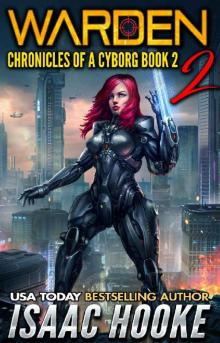 Warden 2
Warden 2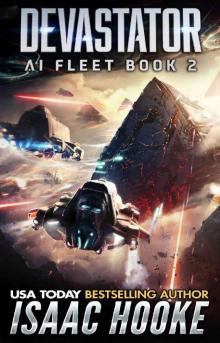 Devastator
Devastator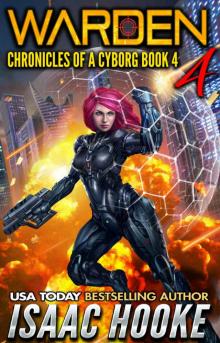 Warden 4
Warden 4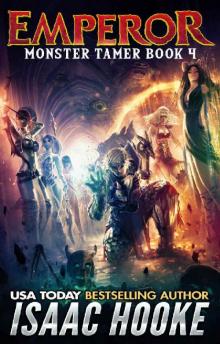 Emperor
Emperor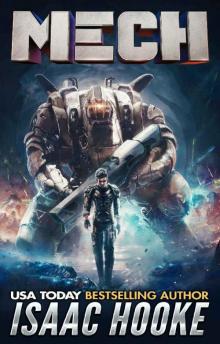 Mech
Mech Conqueror
Conqueror Fighter
Fighter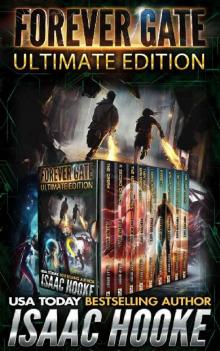 The Forever Gate Ultimate Edition
The Forever Gate Ultimate Edition Defiler
Defiler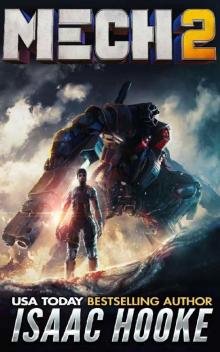 Mech 2
Mech 2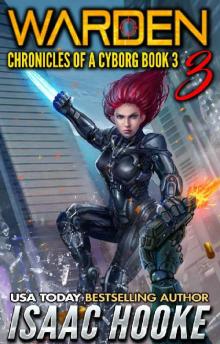 Warden 3
Warden 3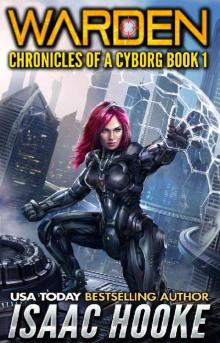 Warden 1
Warden 1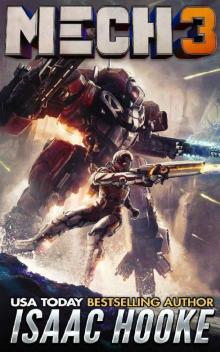 Mech 3
Mech 3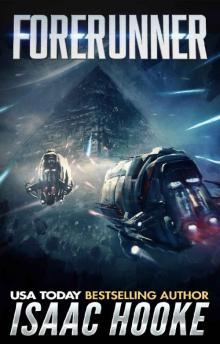 Forerunner
Forerunner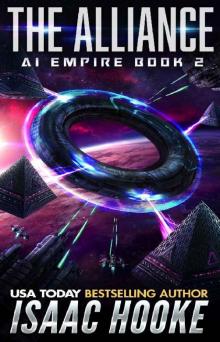 The Alliance (AI Empire Book 2)
The Alliance (AI Empire Book 2)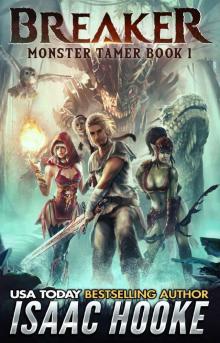 Breaker (Monster Tamer Book 1)
Breaker (Monster Tamer Book 1) Bender of Worlds
Bender of Worlds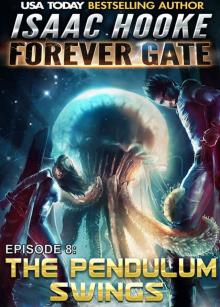 The Pendulum Swings (The Forever Gate Book 8)
The Pendulum Swings (The Forever Gate Book 8)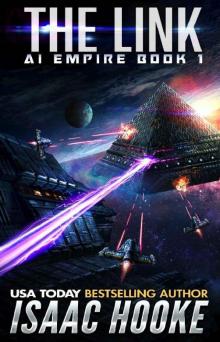 The Link
The Link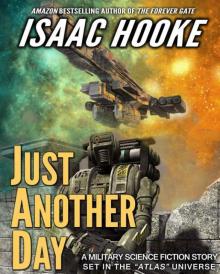 Just Another Day
Just Another Day Star Warrior
Star Warrior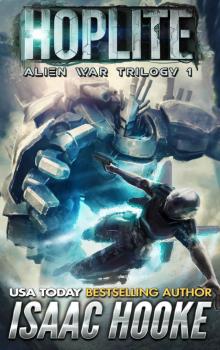 Alien War Trilogy 1: Hoplite
Alien War Trilogy 1: Hoplite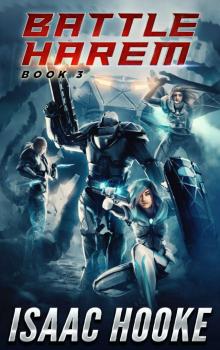 Battle Harem 3
Battle Harem 3 The Ethan Galaal Series: Books 1 - 3
The Ethan Galaal Series: Books 1 - 3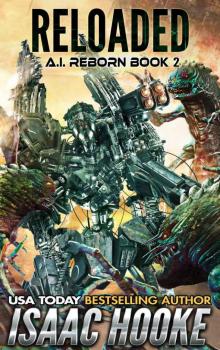 Reloaded
Reloaded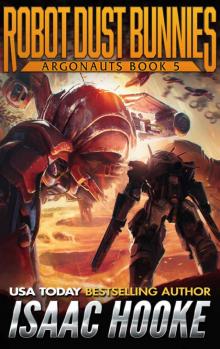 Robot Dust Bunnies (Argonauts Book 5)
Robot Dust Bunnies (Argonauts Book 5) Battle Harem
Battle Harem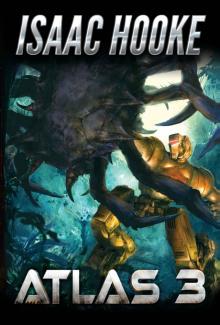 ATLAS 3 (ATLAS Series Book 3)
ATLAS 3 (ATLAS Series Book 3)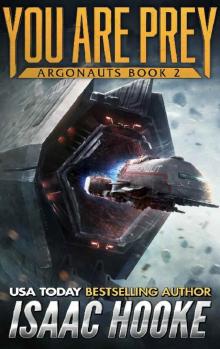 Argonauts 2: You Are Prey
Argonauts 2: You Are Prey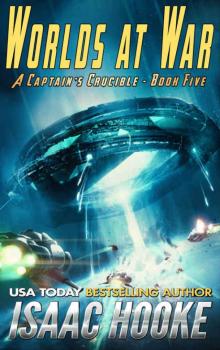 Worlds at War (A Captain's Crucible Book 5)
Worlds at War (A Captain's Crucible Book 5)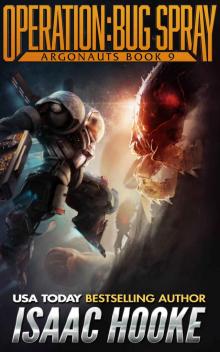 Operation: Bug Spray (Argonauts Book 9)
Operation: Bug Spray (Argonauts Book 9)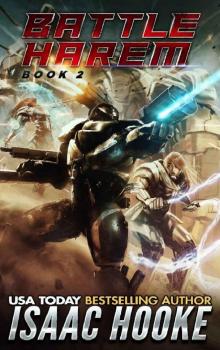 Battle Harem 2
Battle Harem 2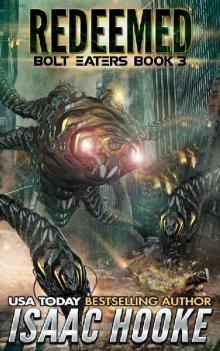 Redeemed (Bolt Eaters Trilogy Book 3)
Redeemed (Bolt Eaters Trilogy Book 3) Atlas
Atlas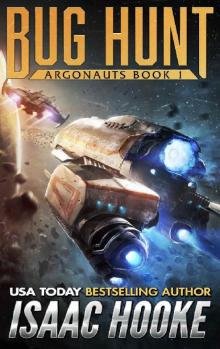 Argonauts 1: Bug Hunt
Argonauts 1: Bug Hunt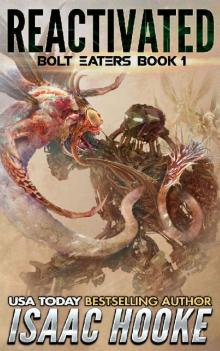 Reactivated (Bolt Eaters Trilogy Book 1)
Reactivated (Bolt Eaters Trilogy Book 1)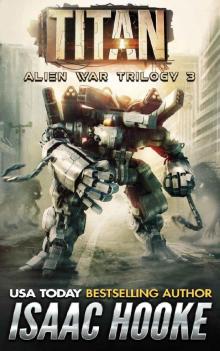 Alien War Trilogy 3: Titan
Alien War Trilogy 3: Titan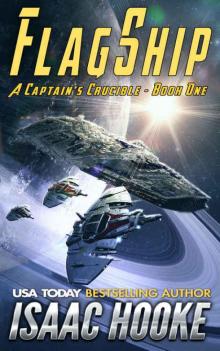 Flagship (A Captain's Crucible #1)
Flagship (A Captain's Crucible #1)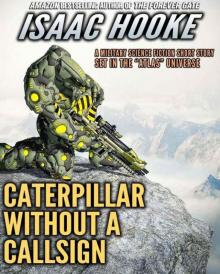 Caterpillar Without A Callsign
Caterpillar Without A Callsign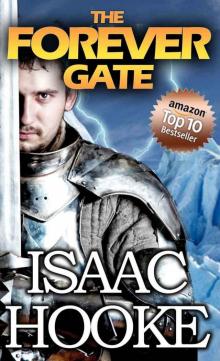 The Forever Gate
The Forever Gate He Who Crosses Death (Star Warrior Quadrilogy Book 3)
He Who Crosses Death (Star Warrior Quadrilogy Book 3) Reforged (Bolt Eaters Trilogy Book 2)
Reforged (Bolt Eaters Trilogy Book 2)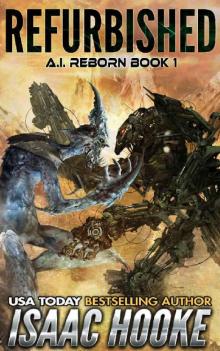 Refurbished
Refurbished Reloaded (AI Reborn Trilogy Book 2)
Reloaded (AI Reborn Trilogy Book 2) He Who Crosses Death
He Who Crosses Death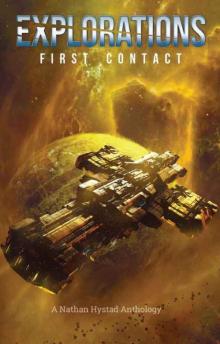 Explorations: First Contact
Explorations: First Contact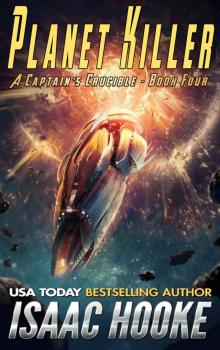 Planet Killer (A Captain's Crucible Book 4)
Planet Killer (A Captain's Crucible Book 4)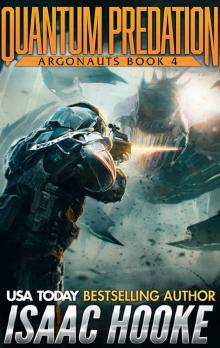 Quantum Predation (Argonauts Book 4)
Quantum Predation (Argonauts Book 4) Clandestine-IsaacHooke-FreeFollowup
Clandestine-IsaacHooke-FreeFollowup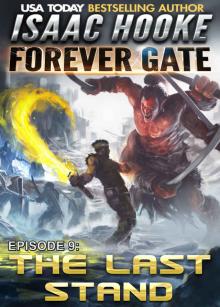 The Last Stand (The Forever Gate Book 9)
The Last Stand (The Forever Gate Book 9)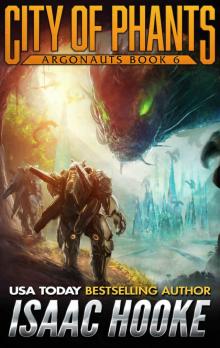 City of Phants (Argonauts Book 6)
City of Phants (Argonauts Book 6)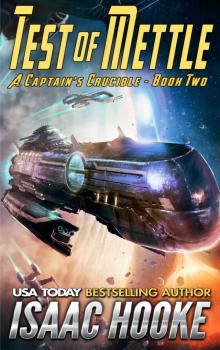 Test of Mettle (A Captain's Crucible Book 2)
Test of Mettle (A Captain's Crucible Book 2)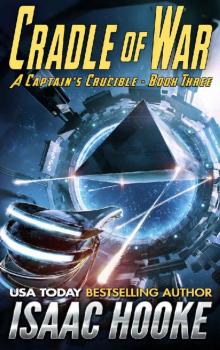 Cradle of War (A Captain's Crucible Book 3)
Cradle of War (A Captain's Crucible Book 3) Rade's Fury (Argonauts Book 7)
Rade's Fury (Argonauts Book 7)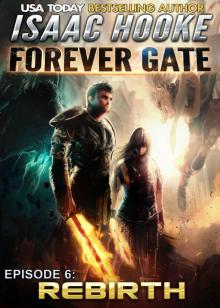 Rebirth (The Forever Gate Book 6)
Rebirth (The Forever Gate Book 6) The Forever Gate Compendium Edition
The Forever Gate Compendium Edition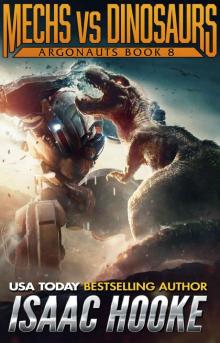 Mechs vs. Dinosaurs (Argonauts Book 8)
Mechs vs. Dinosaurs (Argonauts Book 8)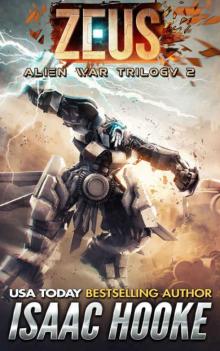 Alien War Trilogy 2: Zeus
Alien War Trilogy 2: Zeus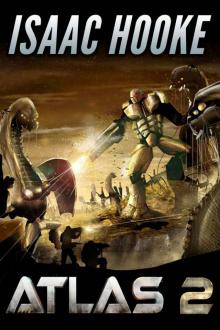 ATLAS 2 (ATLAS Series Book 2)
ATLAS 2 (ATLAS Series Book 2)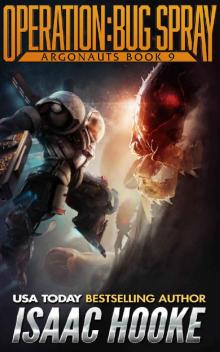 Operation_Bug Spray
Operation_Bug Spray